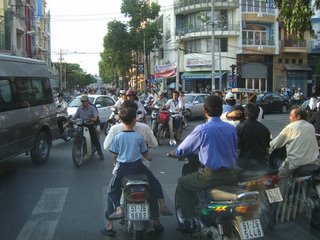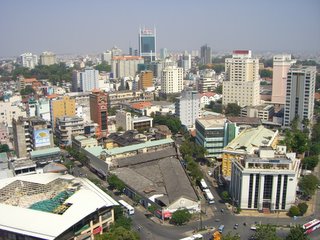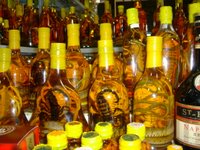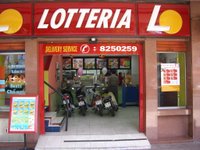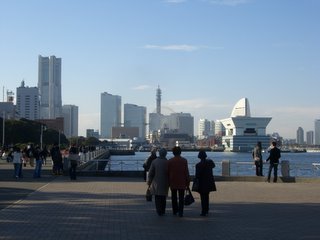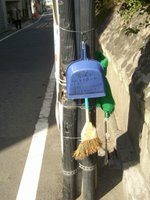Yo! - From The Delta To The DMZ!



Our daughter, Della, also happened to be in Vietnam, as part of her 6-month excursion around the world. Staying in Hanoi at the time we arrived incountry, she boarded a flight south, and joined us in Ho Chi Minh City; a welcome surprize!
Every culture has its own laguage and customs, and we have found that the four most important phrases to acquire early on in any country you visit are; hello, please, thanks and cheers! The judicuous use of any or all of these words is greatly appreciated by the local population, and they can open doors for you, (even if sometimes they are marked EXIT)! In this particular case, the Vietnamese word for hello is nay, nay; please is dong tu; thanks is cam on, and cheers is Yo! Easy enough? You are now ready to deal with any contingency!
Eager to see some of the neighboring area, we planned two excursions; one to a resort town, (which also happened to have been a huge US Base during the Vietnam War), at nearby Vang Tau Island. It was accessible by means of a 1.5 hour boatride on a Russian Hydrofoil, which operate from a wharf just outside our hotel. Constructed of what the guide book delicately termed 'wood and dented metal' the hydrofoils are identical to models cr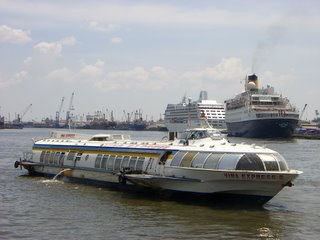 uising the Volga River, and were a source of curiosity for Jay and myself from our first arrival. Neither of us had been on such a craft, and were interested in doing so. Thus, early in the morning (for us, anyway) we were off in a cloud of choking diesel smoke, and a bit of suspicion that this particular conveyance had seen its best days about 15 years ago. Our vessel, the Vina Express II, (the crew told us to not ask what happed to the original), was s slightly-seedy, rusting hulk that was decorated in Early Soviet Chintz; it had the same dismal blue and white interior that had graced the old diesel-electric train we had taken from Hong Kong to Shanghai a few years ago. To top it off, there was an oddly-incongruious plastic bowl of yellow flowers set on the foreward bulkhead, and it was fitted with what appeared to be seating either cast-off from the Bolshoi, or salvaged from yet another Aerofloat misadventure. To further reinforce my already-fragile faith in Russian Engineering, no sooner had we got up to speed than the slap of a wave dropped a plug from the overhead TV monitor, putting that out of order for the trip. Just to further foster passenger confidence in this aging crate, from time-to-time a technician would wander into the cabin, lift an inspection hatch, and after rummaging around for a few minutes would then retire to the aft cabin shaking his head, (no doubt to immediately don a personal floatation device and hang around the life boats). At least the air conditioning worked.
uising the Volga River, and were a source of curiosity for Jay and myself from our first arrival. Neither of us had been on such a craft, and were interested in doing so. Thus, early in the morning (for us, anyway) we were off in a cloud of choking diesel smoke, and a bit of suspicion that this particular conveyance had seen its best days about 15 years ago. Our vessel, the Vina Express II, (the crew told us to not ask what happed to the original), was s slightly-seedy, rusting hulk that was decorated in Early Soviet Chintz; it had the same dismal blue and white interior that had graced the old diesel-electric train we had taken from Hong Kong to Shanghai a few years ago. To top it off, there was an oddly-incongruious plastic bowl of yellow flowers set on the foreward bulkhead, and it was fitted with what appeared to be seating either cast-off from the Bolshoi, or salvaged from yet another Aerofloat misadventure. To further reinforce my already-fragile faith in Russian Engineering, no sooner had we got up to speed than the slap of a wave dropped a plug from the overhead TV monitor, putting that out of order for the trip. Just to further foster passenger confidence in this aging crate, from time-to-time a technician would wander into the cabin, lift an inspection hatch, and after rummaging around for a few minutes would then retire to the aft cabin shaking his head, (no doubt to immediately don a personal floatation device and hang around the life boats). At least the air conditioning worked.
I must say, the thing did clip along at a smart pace; at least until the big waves got at it offshore. At this point I was forcefully reminded why some 40 years ago the Royal Canadian Navy gave up its plans to use hydrofoils as sub-chasers. At least one passenger beat a hasty retreat from the cabin, clutching the air-sick bag fortutiously tucked into the seat, while others didn't look like they were enjoying the ride one bit. Meanwhile, I couldn't help notice that both the sick-bags, and the drinking water they handed out, were labelled as being from Air Vietnam. Some sort of corporate tie-in, I suppose? (More likely the visible evidence of the internal workings of the local black market!)
Anyway, we arrived at our destin ation in one piece, and set off to explore the town and its beaches. We found that, this being the off-season, things were quiet, but it is obvious that the area is hopeful of an economic turnaround. Sidewalks and the basic infastructure are being improved, condos are sprouting up, and businesses are sprucing-up in the hope that the tourists will come. Will they? The population seemed freindly, the climate was tropical, there were good beaches and prices were cheap. I would say that there is a good chance that the tourists will discover a place in the sun in this corner of the world. Sandra, Della and Jean oceanfront on Vang Tau Island.
ation in one piece, and set off to explore the town and its beaches. We found that, this being the off-season, things were quiet, but it is obvious that the area is hopeful of an economic turnaround. Sidewalks and the basic infastructure are being improved, condos are sprouting up, and businesses are sprucing-up in the hope that the tourists will come. Will they? The population seemed freindly, the climate was tropical, there were good beaches and prices were cheap. I would say that there is a good chance that the tourists will discover a place in the sun in this corner of the world. Sandra, Della and Jean oceanfront on Vang Tau Island.
We followed this with a trip to the Mekong Delta a few days later. Although only 100 km away, it is a 3-hr trip by car, given the poor state of the roads and the traffic. For much of the way the speed limit is only 40 km per hr. The fastest we ever got up to was 80 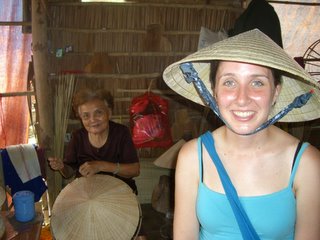 km per hour, and only in short bursts at that. There was the constant threat of a collision with the usual swarming motorbikes, which occupied one of the two lanes, and threatened to take over the second on at any time. However, our guide made liberal use of his horn, and succeeded in keeping our mini-van out of all conflicts, exept for one large rooster that made the mistake of thinking that it was the Cock of the Walk, even though it was standing in the middle of a side-road. I am thinking it ended up as the Stew of the Few. Right, Della trying on a hat made in the traditional manner.
km per hour, and only in short bursts at that. There was the constant threat of a collision with the usual swarming motorbikes, which occupied one of the two lanes, and threatened to take over the second on at any time. However, our guide made liberal use of his horn, and succeeded in keeping our mini-van out of all conflicts, exept for one large rooster that made the mistake of thinking that it was the Cock of the Walk, even though it was standing in the middle of a side-road. I am thinking it ended up as the Stew of the Few. Right, Della trying on a hat made in the traditional manner.
We drove to Viet Long, a small but pretty town located on a large river. There we hired a local guide for a tour of the surrondings by boat. Visiting a local brick-plant, we saw how their local economy worked, and could not help but notice that we had seen some of their ceramic works in stock at the Home Depot back in Canada. From there by boat we went across the river to tour an orchard/plantation. As it turned out, the plantation is owned  by Chairman Ho Chi Minh, who is now living there in retirement. Although speaking no English, Uncle Ho, as he prefers to be known, was the most gracious host, offering us generous helpings of fruit, tea, nuts, and what he proudly displays as his newest hobby - making wine and distilling spirits. Help by generous cups of free-flowing spirits shot back with a loud YO!, the 85-year-old Chairman Ho had arranged for live entertainment, consisting of musicians and singers, to entertain as we sat out in a cabana in his field. With a pleasant breeze as well as the treats and the ever-present beverages refreshing us, the weary touristist, we were very much made to feel comfortable in these unfamiliar surroundings. Unfortunately, much to his disappointment, we had to depart after about 45 minutes of this pleasant interlude, since we had other destinations yet on our list for today. Left; me, thanking Chairman Ho Chi Minh for his generous hospitality.
by Chairman Ho Chi Minh, who is now living there in retirement. Although speaking no English, Uncle Ho, as he prefers to be known, was the most gracious host, offering us generous helpings of fruit, tea, nuts, and what he proudly displays as his newest hobby - making wine and distilling spirits. Help by generous cups of free-flowing spirits shot back with a loud YO!, the 85-year-old Chairman Ho had arranged for live entertainment, consisting of musicians and singers, to entertain as we sat out in a cabana in his field. With a pleasant breeze as well as the treats and the ever-present beverages refreshing us, the weary touristist, we were very much made to feel comfortable in these unfamiliar surroundings. Unfortunately, much to his disappointment, we had to depart after about 45 minutes of this pleasant interlude, since we had other destinations yet on our list for today. Left; me, thanking Chairman Ho Chi Minh for his generous hospitality.
Next was a tour up the channel between two islands. Unfortunately, the tide was at low ebb, and we had to thread our way among may boats beached until the flood. However, our skilled boatman picked a deft path, and we made it through spots that stopped most other boats. This gave us a good chance to view the homes and shops fro m the water, as well as to see how people lived on the channel Now in deeper water, we stopped at a local candy factory, where a facinating tour showed us how traditional sweets are still made. From there it was onto the neighbouring town, where we passed a floating maket; each boat tied up in the channel had a speciality good, which it displayed on the bow of the craft. Finally we were reunited with our faithful guide, who had driven down to meet us and take us back to town. This was a very interesting day, and we much enjoyed all of the sights and sensations of the countryside. Right, some of the busy river traffic.
m the water, as well as to see how people lived on the channel Now in deeper water, we stopped at a local candy factory, where a facinating tour showed us how traditional sweets are still made. From there it was onto the neighbouring town, where we passed a floating maket; each boat tied up in the channel had a speciality good, which it displayed on the bow of the craft. Finally we were reunited with our faithful guide, who had driven down to meet us and take us back to town. This was a very interesting day, and we much enjoyed all of the sights and sensations of the countryside. Right, some of the busy river traffic.
While in town we also toured the Old Imperial Palace, now called the Reunification Palace. It was a little spooky; I remember many news clips depecting this building as background, and nobody will ever fo rget the film of the two tanks crashing through its iron gates during the fall of Siagon. (it turns out that the whole thing was staged for propaganda purposes. First of all, in 1975 the government had declared Siagon an Open City - there was no resistance. Then, the tank drivers, who were country boys, got lost and had to hire two guide to get them to the palace. There, all the TV camera were set up, but, unfortunately, the gates had been left open. So there was a brief interlude while the crew ordered the palace staff to close the gates. Then, they revved up the engines and smashed through the gates while the cameras rolled. The guy rushing across the lawn with the Red Flag was the unit Propaganda Officer, and there just happened to be large North Vietnamese Flags on hand so they could wave these from the second floor balcony for the benefit of the camera).
rget the film of the two tanks crashing through its iron gates during the fall of Siagon. (it turns out that the whole thing was staged for propaganda purposes. First of all, in 1975 the government had declared Siagon an Open City - there was no resistance. Then, the tank drivers, who were country boys, got lost and had to hire two guide to get them to the palace. There, all the TV camera were set up, but, unfortunately, the gates had been left open. So there was a brief interlude while the crew ordered the palace staff to close the gates. Then, they revved up the engines and smashed through the gates while the cameras rolled. The guy rushing across the lawn with the Red Flag was the unit Propaganda Officer, and there just happened to be large North Vietnamese Flags on hand so they could wave these from the second floor balcony for the benefit of the camera).
We also toured the War Remenants Museum; a bit of a gentler handle than its original mo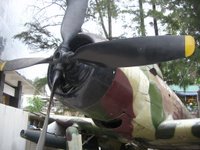 niker - The Museum of US Atrocities And War Crimes. At least the old propaganda flicks are still being put to good use! Above; the gate in front of the old Imperial Palace in downtown Ho Chi Minh City.
niker - The Museum of US Atrocities And War Crimes. At least the old propaganda flicks are still being put to good use! Above; the gate in front of the old Imperial Palace in downtown Ho Chi Minh City.
There are flickering ghosts of the Vietnam War still to be seen about, but they are fading fast. Now it is the new generation that will carry Vietnam forward, and no matter what, they will do so as one of the few generations not under the yoke of a foreign power. In the past 400 years of Vietnamese history, for only 80 have they not been ruled by a foreign conqueror. It took the Vietnamese people 35 years to get past their War of Unification - now their destiny is in their hands.
Sited Along The Way: Have a look at the craft moored on the upper right. Look familiar? It is a former US Navy Rivercraft of the type that appeared in the movie Apocalpyse Now. Currently it is employed in the service of the Harbour Police. We also saw a few US Army Jeeps still being driven on the streets, complete with CB whip antennae, but we were not sufficiently quick to get a photo of one.
Have a look at the craft moored on the upper right. Look familiar? It is a former US Navy Rivercraft of the type that appeared in the movie Apocalpyse Now. Currently it is employed in the service of the Harbour Police. We also saw a few US Army Jeeps still being driven on the streets, complete with CB whip antennae, but we were not sufficiently quick to get a photo of one.
 This is a photo of Phuong, one of the gracious hostesses who looked after us in our private lounge in the hotel. Many of these young ladies are working part-time to put themselves through university. They are some of the new generation of Vietnamese who hope to work in the emerging economy here.
This is a photo of Phuong, one of the gracious hostesses who looked after us in our private lounge in the hotel. Many of these young ladies are working part-time to put themselves through university. They are some of the new generation of Vietnamese who hope to work in the emerging economy here.
- at right, the Siagon River from our hotel room at night. The boats are lined up for dinner cruises. The dark area behind the illuminated signs on the other side of the river is a former US Army staging area that is slated to become the new International Business Centre of Ho Chi Minh City.
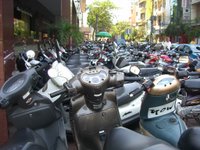
- Right; Scooters, scooters and more scooters. The sidewalk just around the corner from the hotel.
- Left: a final YO! from Vietnam! A toast by Sandra & Jay with some of Uncle Ho's best!
Doug-San, Heading Back To Japan
Saying Sayonara for now.



